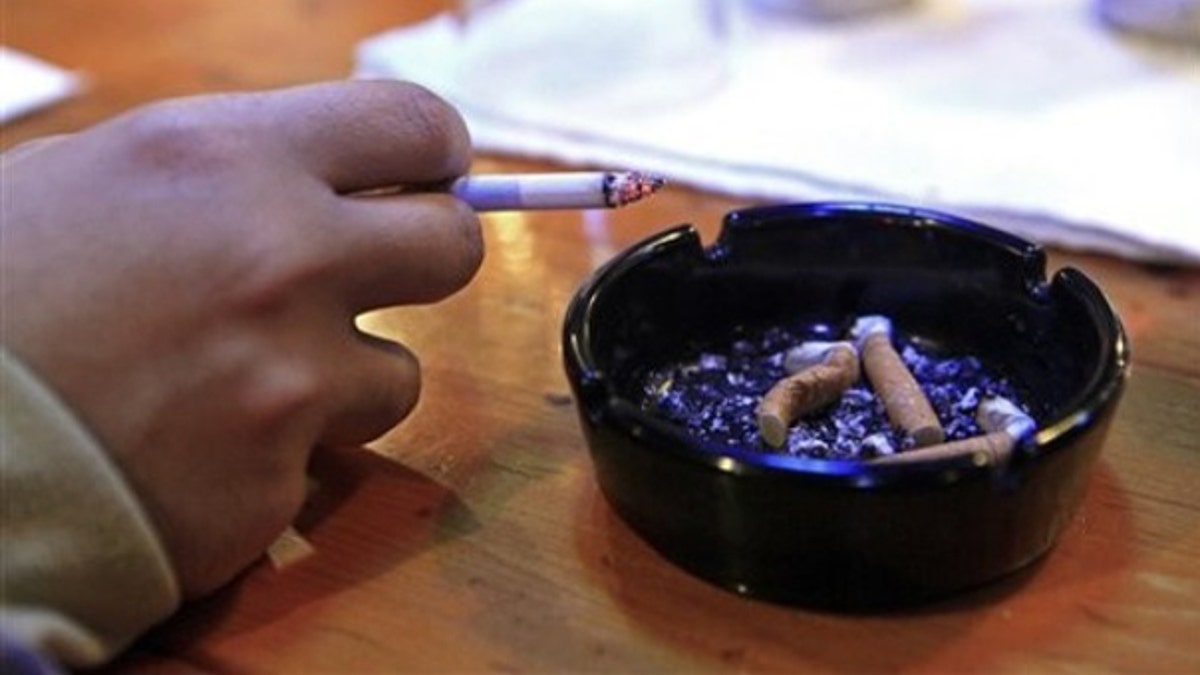
FILE: 2009: A smoker at the Satisfaction Restaurant & Bar in Durham, N.C. (AP)
The appeal of smoking for children and teens may be tied at least in part to their race or ethnicity, a recent U.S. study suggests.
Plenty of previous research has found disparities in smoking habits, with white and Hispanic youth more likely to start smoking and develop a daily habit than black kids, said lead study author Sherine El-Toukhy, at the National Institutes of Health in Bethesda, Maryland. Black children who start smoking by age 14, though, are more likely to carry the habit into adulthood.
"The current study looks at smoking susceptibility, which precedes smoking behavior," El-Toukhy, of the National Institute on Minority Health and Health Disparities, said by email.
To assess susceptibility, researchers looked at survey data collected from 1999 to 2014 from almost 144,000 non-smoking youth aged 9 to 21. Children who said they had tried even a single cigarette were excluded from the study.
All of the kids were asked how likely it was that they would try cigarettes soon, within the next year, or if a friend offered them one to smoke.
From 1999 to 2007, across racial and ethnic groups, roughly 21 percent of the surveyed youth appeared to be susceptible to smoking based on their responses to questions about whether they planned to try cigarettes in the future, researchers report in the journal Pediatrics.
That percentage crept up to about 23 percent in 2014.
During the study period, the estimated proportion of white youth susceptible to smoking held steady at about 21 percent.
The picture was mixed for black children and teens, however. The proportion of these youth susceptible to smoking dropped from 21 percent in 1999 to 17 percent in 2003 but then rebounded to 20 percent by 2014.
Susceptibility steadily climbed for Hispanic youth, from 22 percent in 1999 to 28 percent in 2014.
During the study period, Hispanic children appeared to be as much as 67 percent more susceptible to smoking than white kids. Hispanic youth were most likely to be drawn to cigarettes around ages 12 and 16, the study also found.
"We pinpoint specific ages at which youth who have never tried cigarettes are more likely to be susceptible to smoking and highlight differences in smoking susceptibility by race and ethnicity," El-Toukhy said.
"This is particularly important for prevention efforts in which susceptibility can be used as a screening tool during annual clinic visits to reduce smoking initiation among at-risk youth," El-Toukhy added.
While the study doesn't show why Hispanic youth may be more susceptible to smoking, it's possible they may live in communities where more businesses sell tobacco or have more peers or family members who smoke, the authors note.
One limitation of the study is that researchers rely on youth to accurately recall and report on their prior smoking habits as well as their intent to try cigarettes in the future, researchers note. They also didn't have data on certain factors linked with smoking such as family income levels.
Even so, the findings suggest that to effectively prevent smoking, parents, educators and doctors may need to do a better job of changing how children and teens think about cigarettes, said Dr. Andrew Chang, a researcher at Stanford University in California who wasn't involved in the study.
Convincing them cigarettes are uncool may a more effective deterrent than detailing the dangers, Chang added by email.
"Some prior research has suggested that discussing medical risks of smoking with young people (e.g., lung cancer, emphysema) doesn't have as much of an impact, since kids think in the short term," Chang said. "Rather, discussing image concerns (e.g., tobacco smells bad, makes your breath smell) may be more effective at changing their attitudes toward smoking."
